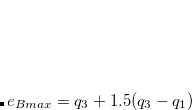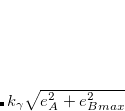| CDS xMatch service documentation |
![\includegraphics[width=\textwidth ]{img/algoSimple.png}](images/img-0025.png)
This cross-match is a simple cross-match: for each source of the catalogue A, it returns the sources of the catalogue B lying at an angular distance less than Radius ( ) from the catalogue A source.
) from the catalogue A source.
In other words, for each source of the catalogue A, it returns the sources of the catalogue B which are inside the cone of aperture  having for apex (also called vertex) the center of the ICRS frame and for axis the direction of the catalogue A source in the ICRS frame.
having for apex (also called vertex) the center of the ICRS frame and for axis the direction of the catalogue A source in the ICRS frame.
![\includegraphics[width=\textwidth ]{img/algoPosErr.png}](images/img-0028.png)
This cross-match is a cross-match based on the positional uncertainties of both catalogue A and catalogue B sources. The selection of the candidates is the same as described in section 3.1.1 of Pineau et al. (2011b).
Sigma correspond to  in eq. 3 of Pineau et al. (2011b).
in eq. 3 of Pineau et al. (2011b).
Max. distance is a safeguard preventing from correlating sources having a too high angular separation.
To look for candidates, we first estimate the maximum of the semi-major axis of errors on the positions of catalogue B sources by a boxplot:  where
where  and
and  are the lower and upper quartiles respectively.
are the lower and upper quartiles respectively.
For each source of the catalogue A, the search radius we use to look for catalogue B source candidates is the minimum between  (in which
(in which  is the semi-major axis of the error on the source of the catalogue A), and the watchdog Max. distance. We then keep only candidates satisfying eq. 3 of Pineau et al. (2011b).
is the semi-major axis of the error on the source of the catalogue A), and the watchdog Max. distance. We then keep only candidates satisfying eq. 3 of Pineau et al. (2011b).
USNO-B1.0: a systematic error of 0.2 arcsec is quadratically added to positional errors on both e_RAJ2000 and e_DEJ2000
Sources having for positional error a NULL (or a NaN) value are ignored.
Because of the use of a boxplot on positional errors to avoid outliers, the result of the cross-match of 2 catalogues is not necessarily symmetric: the number of associations between A and B can be different from the number of associations between B and A.